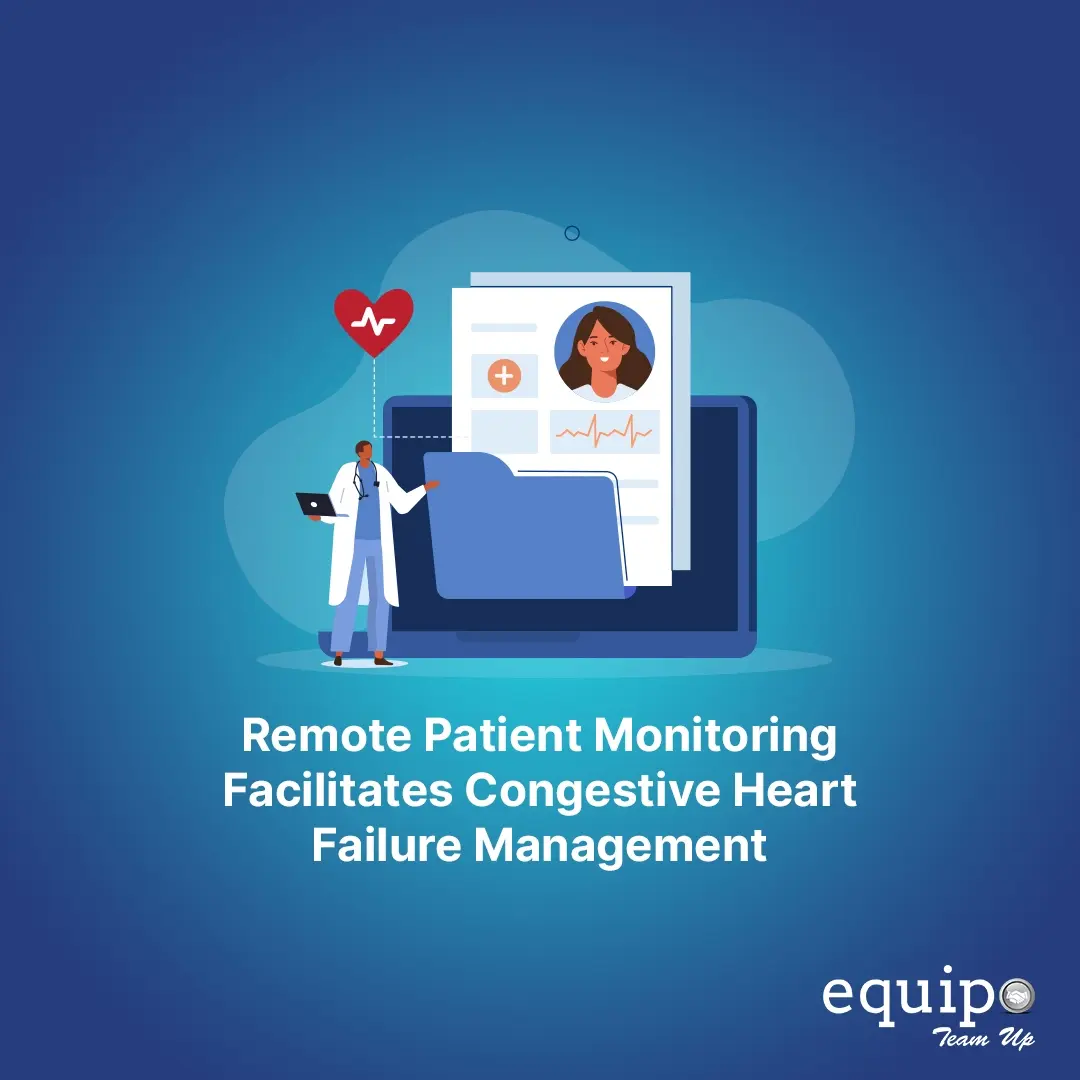Heart Failure (HF) is a leading concern of mortality and morbidity globally. As per research, approximately 26 million of the population across the US are affected by CHF. The numbers are expected to rise 50% by 2030, which signals the need for innovative HF care on a global scale.
Telehealth and telemedicine gained a new trajectory during the pandemic when the healthcare industry largely implemented them. It assisted clinicians in closely monitoring and improving patient health, reducing readmission cases. Herein, RPM is leveraged as a prime technique for patients with CHF that facilitates hassle-free exchange between patients, care teams, and medical practitioners.
In detail, this article discusses the benefits of Remote Patient Monitoring (RPM) in Congestive Heart Failure Management.
Limit the cases of Readmission Rates for CHF Cases
Congestive Heart Failure is a prime healthcare issue among people in the US aged over 65 years. The total readmission rates account for over 26.9%, the highest rehospitalization rate calculated within 30 days. RPM plays an integral role in detecting the signs and symptoms by analyzing the change in the vital parameters, thereby providing timely treatment to reduce the cases of readmissions.
For example, Remote Patient Monitoring (RPM) assists in monitoring blood pressure which is a vital factor for detecting heart failure. Even a slight fluctuation can be detected by caretakers/ patients and conveyed to the physicians to take necessary measures.
Assisting Patients in Understanding Warning Signs After Discharge
Patients with Congestive Heart Failure (CHF) need timely monitoring and care for managing their conditions post-discharge. RPM tools support patients in understanding the warning signs, such as
- Increase in their weight
- Fluid retention
- Blood pressure
That helps to reduce mortality and rehospitalization rates.
For instance, over 70% of patients monitored remotely on the telephone completed 80% of daily readings. Additionally, older adults in the age group above 65 benefited from telemonitoring, reducing the risk of hospitalization due to heart failure.
Remote monitoring enables physicians to intervene and implement proactive treatment and medication. In addition, RPM tools such as checking weights remotely help to detect any rise in the weight due to fluid retention and thereby avoid heart failure.
RPM Highlights the Gaps in the HF Care
RPM bridges the gaps by providing patient care remotely without delay. It enables clinicians to know how the patient is performing post-discharge. Remote patient monitoring enables easy management of patients outside the hospital in a remote setting such as their home. For instance, a medical practitioner can keep a tab on physiological measurements such as blood pressure, weight, etc., to remotely provide immediate treatment to the patient.
Additionally, it allows medical practitioners to optimize heart failure medical care permitting complete and timely assistance per the guideline-directed medical therapy (GDMT).
RPM facilitates exchanging physiological measurements acquired from the patients to the care team. The information is transmitted through Bluetooth or a cellular device to evaluate the patient’s current health to strategize a better treatment method. Additionally, RPM allows monitoring heart rhythm, fluid retention, and blood pressure to identify any fluctuation, reducing the need to visit an emergency room.
RPM Systems Used For CHF Patients
1. Hemodynamic sensors
Hemodynamic sensors detect mechanical action in the heart rate and blood flow. Patients and caretakers can check the intracardiac pressure measurements. These include implantable biometric sensors such as CardioMEMS for monitoring Heart Failure status. Additionally, these sensors are implanted inside the human body to check for any change in the patients’ heart rate and pulmonary artery pressure. The information is directly transmitted to the attending cardiologist to look for any change in symptoms.
2. Cardiac implantable Electronic Devices (CIEDs)
Cardiac implantable electronic devices (CIEDs) are widely used to assess intrathoracic impedance in the individual. These include devices such as intracardiac pacemakers and transvenous ones employed widely for monitoring patients with bradycardia. Others include CRTs (resynchronization devices), ICDs (transvenous and subcutaneous defibrillators) for treating tachycardia, and ILRs (implantable loop recorders) for monitoring heart rate.
3. Blood Pressure Monitoring
Blood pressure is directly correlated to HF monitoring. Any significant change in the BP level, including the systolic and diastolic rates, will help doctors to identify when medical intervention is required.
4. Weight Monitoring
Weight monitoring is integral for CHF patients. Fluid retention is a sign of CHF. RPM enables monitoring patient weight remotely by tracking changes in fluid retention to maintain weight, thereby reducing hospitalization cases.
5. Pulse Oximeter Measures
A pulse Oximeter is also known as a probe that measures the amount of oxygen in the blood. The device is placed on the finger. It combines red and infrared light allowing clinicians to know the lack of oxygen and required intervention.
Conclusion
RPM represents a breakthrough in improving heart failure management in patients post-discharge with the help of various tools. It is safe, accessible, and economic for patients, assisting in monitoring their health requirements remotely.Equipo’s Remote Patient Monitoring (RPM) is an integrated system that allows effective and convenient tracking of patients with chronic ailments. The RPM keeps a tab of the patient’s blood pressure, O2 saturation, weight, pulse, BMI, temperature, and much more on a daily basis. It is designed to bridge the gap between patients and physicians through a remote sensing technology that works towards monitoring them in the comfort of their homes. Schedule a demo today

